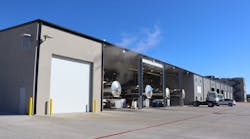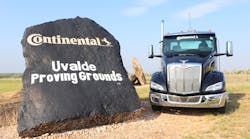The North American upstream industry is set to stage a comeback, according to new data presented by World Oil, a trade publication for the international upstream industry.
According to proprietary survey data, gathered from U.S. operators, US state agencies and international petroleum ministries/departments, World Oil forecasts the following for 2017:
- US drilling will jump 26.8% higher, to 18,552 wells.
- US footage will increase 29.8%, to 151.5 MMft of hole.
- US Gulf of Mexico E&P activity, focused on deepwater projects, will go up approximately 9.4%, with increasing well depths and footage.
- Canadian activity will begin to improve, gaining 21.6% to 4,212 wells.
- Global drilling should increase moderately to 39,742 wells, for a 6.1% pick-up.
- Global offshore drilling, reflecting stagnant capex outside North America, will only increase 1.4% to 2,604 wells.
Speaking to about 400 attendees at a breakfast briefing, Kurt Abraham, World Oil's chief forecaster and editor, said that US production—which averaged 8.9 MMbopd in the fourth quarter, up from 8.7 MMbopd in the third quarter—appears to be on the rise. However, he warned, North America may have to continue in its new role as swing producer, and therefore may be required to remain flexible.
Texas. Drilling in the Lone Star State will rise 26.4%, with double-digit increases expected for all 12 of the Railroad Commission districts. While the gains are being led by the Permian, with some additional recovery in the Eagle Ford, there is also significant improvement under way in conventional activity.
Permian basin. In 2016, operators drilled 3,198 wells in Railroad Commission Districts 8 and 7C, more than originally anticipated. For 2017, World Oil expects to see 3,999 wells drilled in these districts. For 2017, the industry projects a 10% increase in average lateral length for the Permian.
Eagle Ford. In the Eagle Ford's predominantly oil portion, concentrated in District 1, activity should increase 28.3%. World Oil predicts that operators will drill 802 wells with an average TD of 14,250 feet. In the gas-heavy Railroad Commission District 2, operators have said they plan to drill 638 wells to an average TD of 15,400 feet, a gain of 23.9%. Activity in District 4 is also forecast to increase 19.1%.
Gulf of Mexico. Activity has been at historically low levels in the Gulf over the last several years, and 2016 was the lowest yet, with just 117 wells tallied. However, a core of deepwater development activity has continued, and it will continue to form the bulk of work in the Gulf. World Oil projects that drilling will increase about 9%, to 128 wells.
Oklahoma. During 2017, drilling in the state, home to the emerging SCOOP and STACK plays, is expected to increase 38.5% overall, with 1,809 wells scheduled for an average TD of around 11,600 feet.
North Dakota. Based on figures from state officials and a proprietary survey of operators, World Oil forecasts that drilling in North Dakota will total 925 wells in 2017, accounting for 18.7 MMft of hole. Average well depth, including lateral sections, will be approximately 20,250 feet.
Louisiana. Drilling in the northern half of the state is expected to be up a stout 31.2%. Meanwhile, in the state's southern half, featuring conventional oil and deep gas wells, activity is recovering at a more measured pace. Wells drilled are forecast to increase 12.8%, to 123.
Northeastern states. In Pennsylvania, operators plan to drill 774 wells for a 29% increase. In Ohio, drilling should increase 19.1%, to 380 wells. And in neighboring West Virginia, gas-targeted activity is on the rebound, with about half of the wells in the Marcellus. Total wells should reach 245, up 21.9%.
Rocky Mountain states. As operators boost drilling in the prolific Niobrara shale, particularly in the Denver-Julesburg basin, Colorado will see its wells drilled rise 34%, to 1,012 wells. New Mexico should see its wells drilled total 710, for an impressive 40.6% increase.
California/Alaska. Drilling in California, the bulk of which is accounted for by just four firms, is expected to improve about 30%, to 892 wells. Meanwhile, in Alaska, drilling is forecast to increase 15.2%, to 167 wells.








